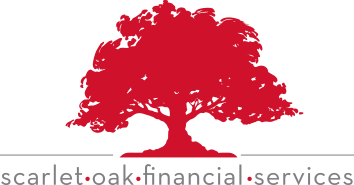Introduction
If you’re thinking about joining a 529 plan, or if you’ve already opened an account, you might be concerned about how 529 funds will affect your child’s chances of receiving financial aid . Of all the areas related to 529 plans, financial aid is perhaps the one that’s most subject to change. But here’s where things stand now.
What is financial aid?
Financial aid is money given to a student to help that student pay for college or graduate school. This money can consist of one or more of the following:
-
- A loan (which must be repaid in the future)
- A grant (which doesn’t have to be repaid)
- A scholarship
- A work-study job (where the student gets a part-time job either on campus or in the community to earn money for tuition)
The typical financial aid package contains all of these types of aid. Over the past few decades, the percentage of loans in the average aid package has been increasing, while the percentage of grants has been steadily decreasing. This trend puts into perspective what qualifying for more financial aid can mean–your child may simply be awarded (and have to pay back) more loans.
The expected family contribution
The financial aid process is all about assessing what a family can afford to pay for college and then trying to fill the gap. The amount that a family is expected to contribute before receiving financial aid is officially called the expected family contribution, or EFC. To calculate your EFC, the institutions that offer financial aid examine your family’s income and assets, and then run them through a formula.
The two main sources of financial aid are the federal government and colleges. To determine your family’s EFC, the federal government uses a formula called the federal methodology and colleges use a formula called the institutional methodology.
The federal methodology and 529 plans
Under the federal methodology, 529 plans ( college savings plans and prepaid tuition plans ) are classified as an asset of the parent, if the parent is the account owner. So, if you’re the parent and the account owner of a college savings plan, you must list the value of the 529 account as an asset on the federal financial aid application (called the FAFSA). Under the federal methodology, a parent’s assets are assessed (or counted) at a rate of no more than 5.6 percent. This means that every year, the federal government says that 5.6 percent of a parent’s assets are available to pay college costs before any financial aid will be forthcoming. (By contrast, student assets are assessed at a rate of 20 percent.)
There are a few special rules to keep in mind about the classification of 529 plans for federal financial aid purposes:
-
- A parent must list a 529 plan account as an asset on the FAFSA only if he or she is the account owner. If a grandparent or other person is the account owner, then the 529 plan does not need to be listed on the FAFSA. In addition, any student-owned or UTMA/UGMA-owned 529 account is also considered a parental asset and reported as such on the FAFSA if the student files the FAFSA as a dependent student. (A 529 account is considered an UTMA/UGMA-owned account when UTMA/UGMA assets are transferred to a 529 account.)
- A corollary to the parent-owned rule is that if a parent is the account owner of several 529 plan accounts for multiple children, then under current rules the parent must list the value of all of the accounts on the FAFSA.
- If a parent’s adjusted gross income is less than $50,000 and a few other requirements are met, the federal government doesn’t count any of that parent’s assets in determining EFC. So, a 529 plan wouldn’t affect financial aid eligibility at all.
Distributions (withdrawals) from a parent-owned 529 plan that are used to pay the beneficiary’s qualified education expenses aren’t classified as either parent or student income on the FAFSA, so they don’t affect financial aid eligibility.
The federal methodology and other college savings options
How do other college savings options fare under the federal methodology? Coverdell education savings accounts, mutual funds, and U.S. savings bonds (Series EE and Series I) owned by a parent are considered parental assets and counted at a rate of 5.6 percent. However, UTMA/UGMA custodial accounts and trusts are considered student assets and assessed at a rate of 20 percent.
Also, distributions (withdrawals) from a Coverdell ESA that are used to pay qualified education expenses are treated the same as distributions from a 529 plan–distributions aren’t counted as either parent or student income on the FAFSA, so they don’t affect financial aid eligibility.
The institutional methodology and 529 plans
Colleges aren’t required to use the federal methodology when they distribute financial aid from their own endowment funds. Instead, they typically use a common formula referred to as the institutional methodology. Generally, the institutional methodology digs deeper into your financial situation than the federal methodology to determine what your family can afford to pay.
The institutional methodology generally treats 529 plans both college savings plans and prepaid tuition plans as a parent asset. When funds are withdrawn from either type of plan, the institutional methodology typically treats the entire amount (contributions plus earnings) as student income.
Scarlet Oak Financial Services can be reached at 800.871.1219 or contact us here. Click here to sign up for our weekly newsletter with the latest economic news.
Source:
Broadridge Investor Communication Solutions, Inc. prepared this material for use by Scarlet Oak Financial Services.
Broadridge Investor Communication Solutions, Inc. does not provide investment, tax, legal, or retirement advice or recommendations. The information presented here is not specific to any individual’s personal circumstances. To the extent that this material concerns tax matters, it is not intended or written to be used, and cannot be used, by a taxpayer for the purpose of avoiding penalties that may be imposed by law. Each taxpayer should seek independent advice from a tax professional based on individual circumstances. Scarlet Oak Financial Services provide these materials for general information and educational purposes based upon publicly available information from sources believed to be reliable — we cannot assure the accuracy or completeness of these materials. The information in these materials may change at any time and without notice.



